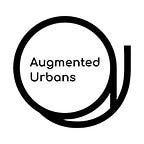Augmented Urbans Local Action: Visionary and resilient placemaking for people and pollinators in Gävle
A visionary co-creation process is taking place involving the University of Gävle and the municipality-owned housing company Gavlegårdarna, to develop the Local Action sites in Gävle. During the first year of the Augmented Urbans project, focus has been on creating unique outdoor green infrastructure designs for two neighbourhoods with different architectural styles and ecosystems. The goal during the project is to create attractive outdoor spaces and to enhance the provisioning of ecosystem services, such as the joy of spending time outdoors and support for pollinators. In doing so, the project also aims to increase awareness of the importance of biodiversity and pollinating insects, such as bees, bumblebees and butterflies, who deliver essential ecosystem services for the society.
Two different neighbourhoods were initially chosen by the parties in the collaboration. The two housing areas are situated approximately 1–3 kilometres from the city centre of Gävle. Although both were built in the 60s-70s, the styles differ significantly: one consists of small yards with houses of different heights and roof angles, and the other of straight two-story lamina houses. A third neighbourhood close to the city centre was later incorporated as an added pilot site, to enable further implementation of some of the many ideas developed through the project activities.
During the summer of 2018, an inventory of pollinating insects and flowering plants was completed at the two main sites and a nearby green area. Twenty-three ‘bee-hotels’ were positioned at these sites, with the aim to analyse current populations of insects and to improve the habitat especially for pollinating insects. An additional hundred bee-hotels are ready to be located in other housing areas managed by Gavlegårdarna. The sites have been documented and mapped in detail.
Placemaking, i.e. aiming to impact the experience or feeling of places, is used as guiding framework to develop, explore and implement ideas into ongoing planning and design projects in the city of Gävle. After the summer of 2018, a number of interdisciplinary workshops with invited experts from different fields were organized to give inspiration, forge new perspectives, and start a discussion on what resilient outdoor areas of the future could look like. The overarching question of the workshops was how to develop outdoor areas that would simultaneously improve the well-being of people as well as facilitate a rich urban ecosystem that harbours biodiversity, particularly a wide variety of pollinating insects.
At the moment, Gavlegårdarna and the University of Gävle are working with planning, designing and specifying the interventions in the housing areas intended for the summer of 2019. The main focus will be on transforming some of the grass lawns into beautiful and biodiversity-rich meadows, planting fruit trees, and designing micro gardens for the human inhabitants of the neighbourhoods. In a parallell process, the partners are exploring how and when XR technology can be utilized to support the planning and design processes, and the experience of using the areas in the long term.
The design ideas, augmented planning processes and test-beds will serve as learning examples for creating more sustainable and resilient urban places in Gävle. The project’s reoccuring Planners Forums offer opportunities to spread the insights and best practices from our Local Action to other cities in the Baltic region, and to gain inspiration by the others.
Welcome to an extra interesting Planners Forum in Gävle, 7–8 May 2019!
/ Marita Wallhagen and Stephan Barthel
